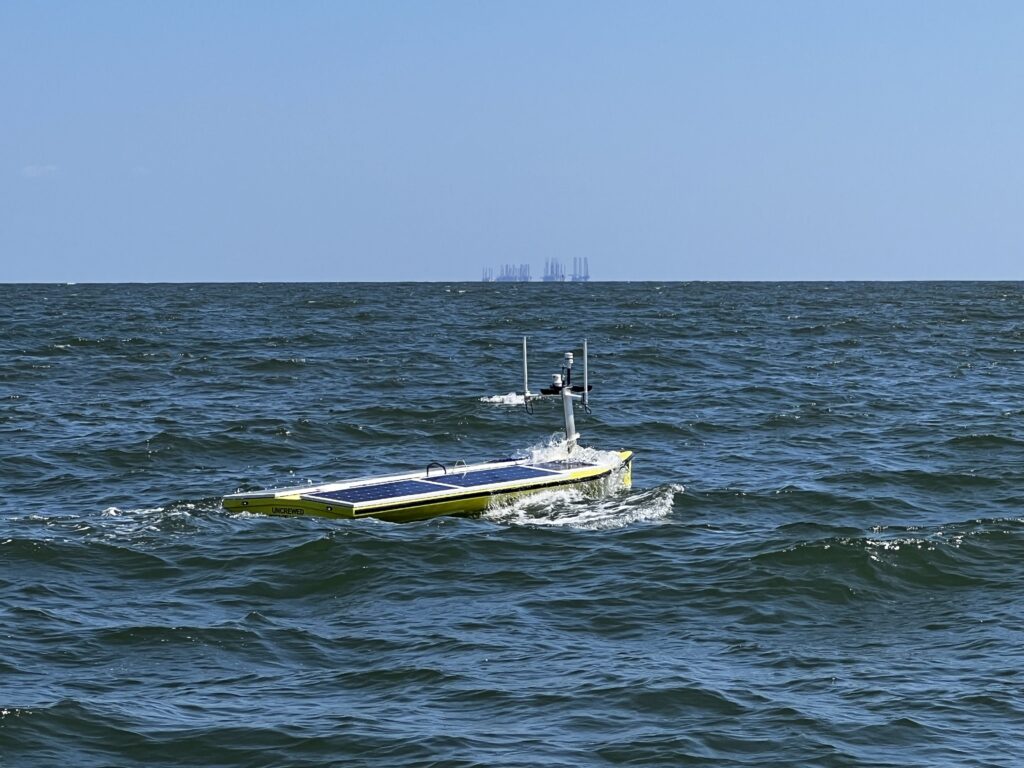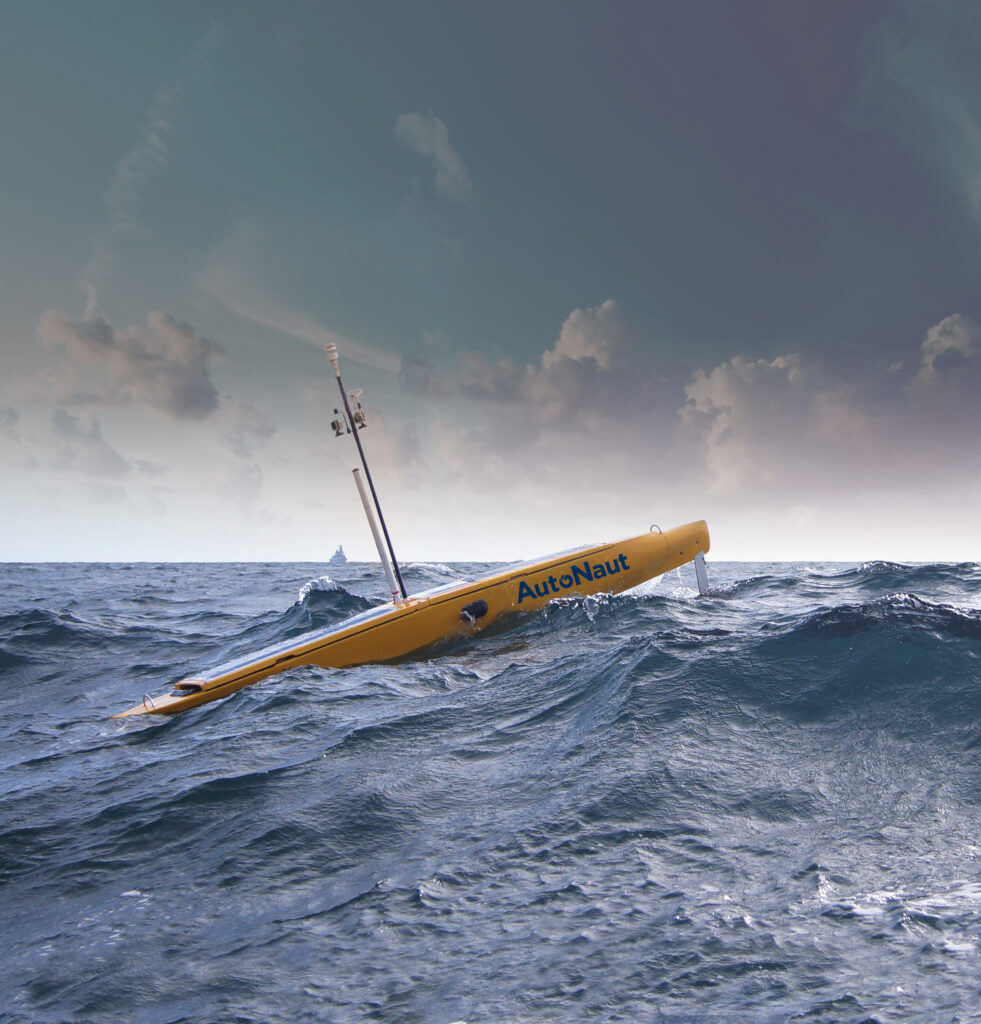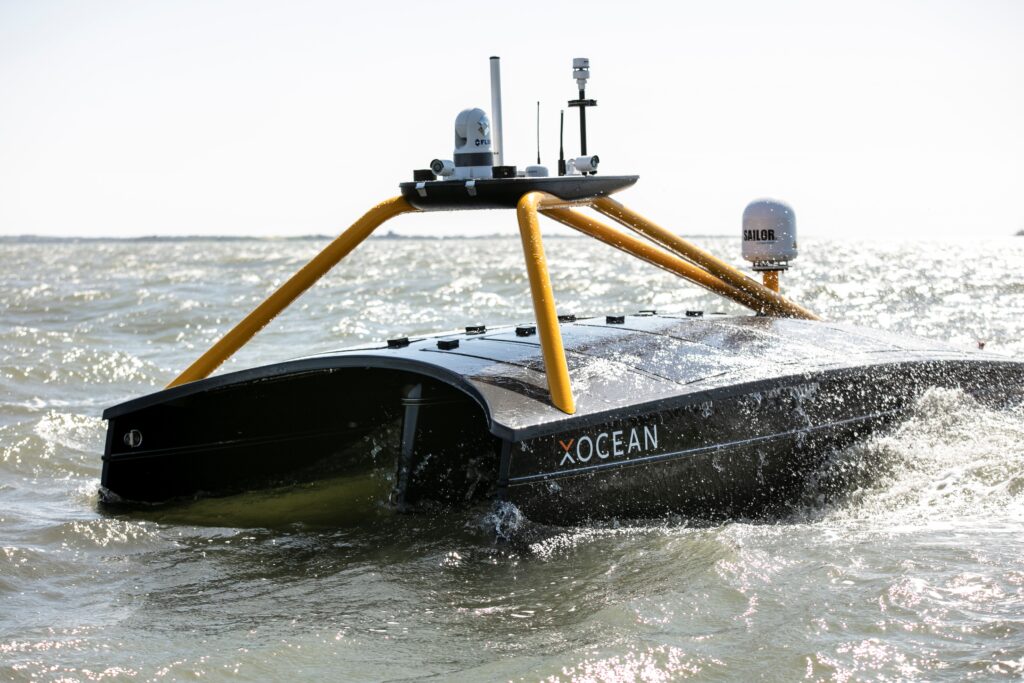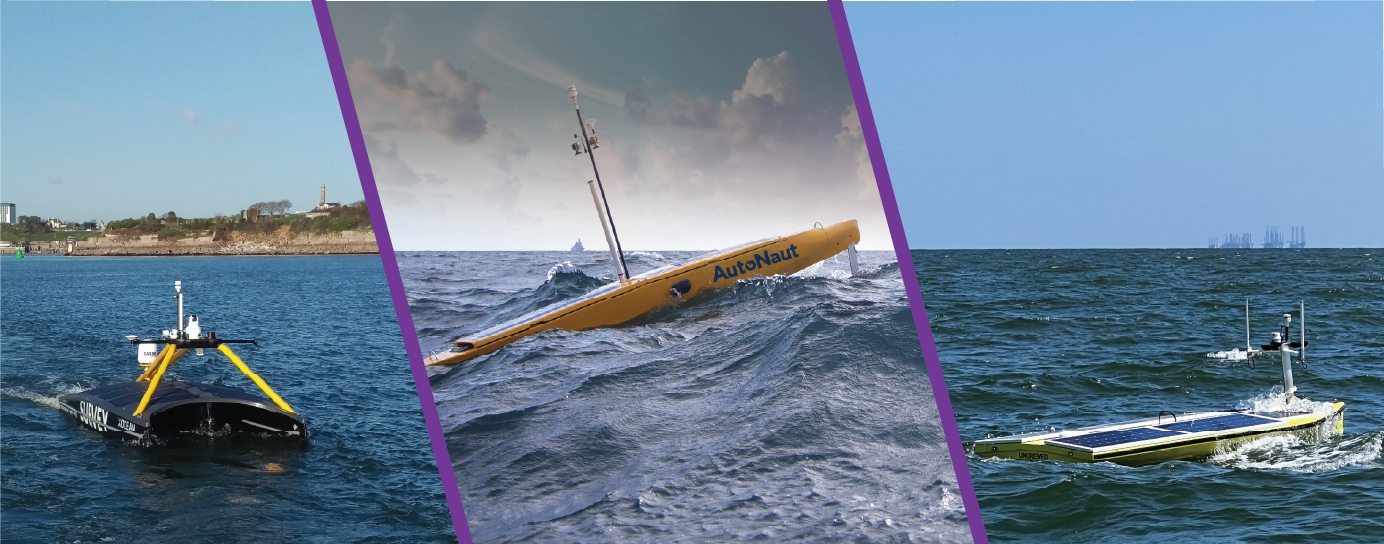As climate change accelerates and organisations face mounting pressure to cut emissions, the need for sustainable innovation has never been greater. From ocean research and monitoring to offshore operations, we're leading the charge with groundbreaking technologies that enable zero-carbon data harvesting. By harnessing uncrewed vehicles and advanced ocean sensors, we're transforming how we explore and protect our oceans—safely, efficiently, and sustainably.
A sea change in ocean monitoring
Traditional methods of collecting oceanic data have long relied on large, fossil-fuelled survey and research vessels. While these can provide reliable harvests, they come with significant drawbacks: high operational costs, considerable carbon footprints and potential risks to personnel navigating often challenging sea conditions.
Scientific research vessels, in particular, are also often in high demand, but with limited berths, and can’t be everywhere all the time, resulting in tough decisions around what science can and can’t be done. Through a series of groundbreaking deployments across multiple ocean environments, we are providing a way to ease the burden across science and industry.
Using uncrewed surface vessels (USVs) and advanced ocean and environmental sensors, it’s a lower cost, lower carbon option, helping scientists and operators to gather the data they need to answer the toughest ocean and operational questions.
Transformative technology for environmental monitoring and climate research
At the heart of our oceanic data collection is our acoustic communication technology. As well as being able to track and communicate with underwater vehicles, our HPTs (High Precision Transceivers) enable robust through-water communications between USVs and seabed sensors.
Mounted on to the USV hull, HPTs can communicate with sensors at depths down to 4,000 m, while deployments have successfully retrieved data from sensors as deep as 3,200 m deep.
Our seabed sensors provide the instrumentation needed to answer critical questions about our planet, from shifting tectonic plates and globally – climatically – significant ocean currents to safe offshore operations.
From our Fetch AZA Bottom Pressure Recorders (BPRs), capable of detecting sea-surface height changes of just one centimetre, to our Fetch pressure monitoring transponders (PMTs) that track small seabed movements, these devices are collecting the crucial data scientists need, remotely, safely and reliably.
Three success stories, one vision



Ormen Lange: supporting net-zero ambitions
In Norway’s second-largest gas field, 120 km off the Norwegian coast, Shell faced a challenge: how to monitor the seabed around their Ormen Lange field without the carbon footprint and personnel risks associated with traditional vessel operations.
The solution came through partnership between us and XOCEAN. Using XOCEAN’s USVs, equipped with our HPT 3000, the team established a remote data harvesting operation to collect data from 75 of our Fetch pressure monitoring transponders (PMTs) on the seabed.
“In Shell we are always looking for new, innovative ways of working that can reduce risk to both people, assets and the environment,” says Egil Syre, Project Manager at Norske Shell. “Uncrewed surface vessels fitted with transceivers have proven highly suitable for harvesting PMT data. Carbon emissions are reduced to almost zero and we don’t need to send people offshore anymore.”
This ongoing project, which began in 2020, marked the first time a remote USV data harvest was completed in Norwegian waters by any operator.
Rockall Trough: a first for oceanography
In a pioneering mission that oceanographers called “a major milestone for oceanography”, a 5 m-long AutoNaut USV was deployed to retrieve data from Fetch AZA bottom pressure recorders (BPRs) moored 1,800 m deep in the Rockall Trough, northwest of the UK’s Shetland Islands.
The sensors are part of a 10-year research project by the Scottish Association of Marine Science (SAMS) to measure pressure and currents on each side of the Atlantic Ocean and study their effect on our climate.
Equipped with our HPT 3000, the wave-propelled USV successfully collected data from Fetch AZA BPRs on the seabed, retrieving climate critical data and transmitting it to shore via satellite – reducing cost, emissions and HSE risk.
AutoNaut founding Director Mike Poole said: “This was the first time in the 10 years of AutoNaut’s experience we had been asked if can we get zero carbon data. It is a practical and positive response to climate change and, importantly, will probably become much cheaper than sending manned, diesel-fuelled ships.
“We look forward to further zero carbon harvests with the aid of Sonardyne technology as this long-term project progresses.”
US Gulf of Mexico: pushing boundaries in challenging waters
Perhaps the most demanding test of this technology came in the notoriously challenging waters of the US Gulf of Mexico’s Loop Current System (LCS). Here, SeaTrac‘s solar and battery-powered SP-48 USV, equipped with our HPT 7000L, has performed three separate missions, each over more than 580 nautical miles, to harvest data from nine deep-water sensors. This included our Origin 65 acoustic Doppler current profilers (ADCPs) and Current Pressure Inverted Echo Sounders (CPIES).
The mission faced the additional challenge of the LCS’s notoriously strong currents and fast-moving eddies, yet succeeded in collecting crucial data from sensors positioned at depths between 1,800 – 3,200 m.
“This successful mission marks a significant milestone in our mission to revolutionise ocean data collection,” says Hobie Boeschenstein, Director of Operations and Business Development, SeaTrac.
“By leveraging our USV technology and Sonardyne’s acoustic expertise, we’ve proven that unmanned systems can safely and efficiently gather critical oceanographic data, paving the way for a more sustainable future of marine research.
A triple win: cost, safety and sustainability
Across all three operations, the benefits our product innovations enable are clear and consistent:
- Reduced carbon footprint: From AutoNaut’s wave-propelled vessel to SeaTrac’s solar-powered USV, these solutions eliminate the emissions associated with traditional research vessels.
- Enhanced safety: By removing the need crewed ships to venture into challenging offshore environments, these uncrewed solutions eliminate personnel risk entirely.
- Real-time data access: Unlike traditional methods where data might only be available after a vessel returns to port, these solutions can enable immediate transmission of information to onshore teams.
- Lower operational costs: As with all innovative technology, early adoption and initial set-up costs mean that it is not always the most immediately economical option. But as demand increases and the technology develops, the future economic benefits will be substantial. Autonomous operations will significantly reduce the expenses associated with crewed vessel deployments.
“The use of wave or solar-powered USVs for zero carbon data gathering operations on these scales is a key moment in marine robotics,” says Aidan Thorn, Sonardyne’s Business Development Manager for Marine Robotics.
“Our ocean presents some of the most challenging environments for any vessels, not least uncrewed ones. We are proud to be at the forefront of the technology with enables their operations.”
A blueprint for the future
As climate concerns intensify and technology continues to advance, our pioneering work provides a blueprint for how critical ocean monitoring can continue – and even expand, spatially and temporally – while reducing environmental, safety and financial impacts.
“Moving from crewed to uncrewed vessels for such operations enables the drive to reduce carbon emissions in marine industries,” adds Thorn. “Similar remote data collection solutions can be realised in any marine operation that requires long-term data collection.
“With successful deployments in the Atlantic Ocean, Norwegian Sea and Gulf of Mexico – each presenting unique challenges – we have demonstrated that zero-carbon data harvesting isn’t just a promising concept but a practical reality ready for widespread adoption.”
For industries ranging from offshore energy production to long-term environmental research, the message is clear: the future of ocean data collection has arrived and it’s sustainable, safer and more efficient than ever before.
